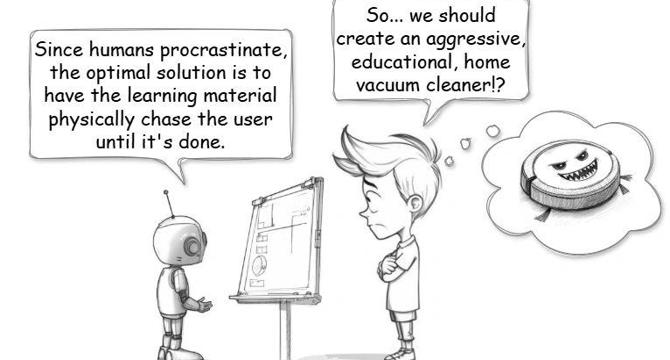Product Management News
Medium
191

Image Credit: Medium
Six Features in Search of a Customer: The Theatre of Product Absurdity
- Successful product leaders distinguish themselves by their ability to prioritize building roadmaps that lead to easily marketable and sellable products, rather than getting caught up in superfluous features.
- Research indicates that stakeholder misalignment often stems from inadequate quality requirements and a lack of questioning management decisions in the product roadmap alignment process.
- Harvard Business School studies show that approaching product development with strict cost-control measures can backfire, highlighting the importance of better listening and understanding customer needs.
- Product teams should focus on solving real customer problems, watching user behaviors, and ensuring roadmaps are based on actual market insights, rather than trying to rationalize irrelevant features.
- Strong product leaders act as directors, synthesizing data and ensuring alignment among team members to build products customers are willing to pay for.
- Prioritize features based on unit economics, development costs, and resource constraints, and incorporate market validation and competitive analysis to guide product development.
- Listen to go-to-market teams for valuable insights but maintain control over roadmaps to ensure alignment with strategic objectives and customer needs.
- Clearly define success metrics upfront, validate assumptions with evidence, and be willing to discontinue features that do not meet business value criteria, preventing unnecessary feature sprawl.
- The article emphasizes the importance of preventing product development from spiraling into complexity by continuously aligning projects with strategic goals and focusing on customer impact over innovation.
- It juxtaposes the evolution of a simple solution into a complex, unwieldy product with Kafka-esque attributes, illustrating the dangers of losing sight of the original customer problem.
- Product development should prioritize solving real customer problems efficiently over creating elaborate, unnecessary features, ensuring that products remain practical and valuable to the target audience.
Read Full Article
11 Likes
Medium
19

Image Credit: Medium
Starting my Startup!
- A mechanical engineering student took on the challenge of building an app after being constantly engaged in building physical products and art.
- Inspired by the love for giving and receiving opinions, the student created an app named Raay, which means "opinion" in Urdu.
- After conducting market research and learning app development, Raay was launched in April 2025 and gained over 100 users from 10 countries within a week.
- The experience of building the app provided insights into app development, product management, and entrepreneurship, emphasizing the importance of dedication and accepting imperfections.
Read Full Article
1 Like
Medium
355

Image Credit: Medium
Build a product with Gen AI as your partner: 3-SolutionGeneration
- In part 3 of the series, Gen AI used innovative solutions to address the customer problem hypothesis identified in part 1 and the promising market attributes discovered in part 2.
- The Innovator GPT provided various product ideas, some meeting constraints like being cheap and simple, and others being more unconventional such as creating scary escape room challenges for training.
- A study was conducted to gauge the creativity of the ideas generated by Gen AI, showing that they were seen as moderately creative by participants matching the target customer persona.
- The results indicated an average creativity score of 2.13 on a 3-point scale, with the AI producing applicable and novel ideas that the human participants found to be somewhat creative.
- Despite some challenges in the summarization process, the use of Gen AI proved valuable in generating business ideas and providing insights for decision-making.
- Moving forward, the series will continue to develop and refine a combined solution based on the top-ranked idea, supported by the analysis and input from Gen AI.
- The study involved 12 participants, with efforts made to match the demographic of technical project, program, and product managers.
- Randomization of ideas for participants and considerations for reducing Y-axis labels in visualizations were highlighted as areas for improvement in future studies utilizing AI assistance.
- The upcoming articles in the series will focus on creating a business plan leveraging insights from the preceding parts, demonstrating the practical applications of using AI in product development.
- Overall, Gen AI showcased its capacity to generate creative solutions, providing valuable inputs for innovation and decision-making processes.
- The series aims to continue exploring the potential of AI collaboration in product development and business planning, highlighting the benefits and challenges of integrating AI tools.
Read Full Article
21 Likes
Medium
123

Image Credit: Medium
The Partnership Matrix: How Humans and AI Can Work Together
- The article discusses the importance of creating intentional partnerships between humans and AI to leverage both human judgment and machine capabilities effectively.
- The focus is on defining the right working relationship between humans and AI to optimize decision-making and enhance critical thinking.
- It introduces a Partnership Matrix that categorizes decision types into Automation, Augmentation, Exploration, and Command zones based on stakes and uncertainty.
- The article emphasizes the need for organizations to understand that most jobs in the future will likely involve partnerships between humans and AI.
- AI lacks human context, accumulated judgment, and implicit knowledge, making it crucial for humans to be part of all AI decision-making processes.
- Context preservation is essential as AI processes data efficiently but may miss the meaning crucial for decision-making, leading to potential issues like eroding customer trust.
- The framework suggests optimizing different aspects for each zone, such as efficiency, expanded thinking, understanding problem spaces, and judgment quality.
- Leadership in the age of AI involves designing environments that support sound decision-making and understanding how to create partnerships where human creativity and AI's analytical power reinforce each other.
- The article stresses the importance of accountability in decision-making and highlights the significance of creating partnerships that amplify both human and machine strengths for successful outcomes.
- Leaders are encouraged to orchestrate partnerships between human and machine intelligence to maximize their respective strengths and work towards outcomes unachievable alone.
- Ultimately, the focus is on collaborative decision-making between humans and AI, emphasizing the potential for creating efficient and effective organizations through thoughtful partnerships.
Read Full Article
7 Likes
Discover more
- Programming News
- Software News
- Web Design
- Devops News
- Open Source News
- Databases
- Cloud News
- Operating Systems News
- Agile Methodology News
- Computer Engineering
- Startup News
- Cryptocurrency News
- Technology News
- Blockchain News
- Data Science News
- AR News
- Apple News
- Cyber Security News
- Leadership News
- Gaming News
- Automobiles News
Medium
204

Image Credit: Medium
15 Career Lessons I’ve Learned in 15 Years of Corporate Life
- 15-year corporate journey from Financial Analyst to Senior Product Manager at Amazon MGM Studios.
- Key lessons include focusing on delivering results, valuing interpersonal skills, and tracking personal wins.
- Importance of rest, finding alignment in career, and recognizing influential individuals highlighted.
- Emphasis on growth, support systems, and turning reflection into action.
Read Full Article
12 Likes
Medium
320

Image Credit: Medium
How the role of the Product Manager is evolving
- The role of the Product Manager is evolving with a focus on understanding the changing landscape and responsibilities associated with the position.
- Product Managers are regarded as orchestrators who combine various elements to ensure the product aligns with its purpose, rather than just being executors of tasks.
- The value of a Product Manager lies in their ability to read data, challenge metrics, prioritize effectively, and make informed decisions based on judgment and context.
- While artificial intelligence can enhance decision-making, it is essential for Product Managers to maintain human contact, cultivate strategic thinking, and embrace the evolving nature of their role.
Read Full Article
19 Likes
Medium
308

Image Credit: Medium
Washing the Soul — Four Spells to Free Yourself from the Pain of Failure
- When experiencing failure, it's important to release emotions and gain clarity to analyze what went wrong.
- Methods like art, deep relaxation, and crying can help wash away unnecessary memories and emotions, leading to emotional balance.
- Deep relaxation techniques like self-hypnosis can guide the mind into a peaceful state and reset emotions.
- Crying is a natural and healthy process that releases stress hormones, organizes emotions, and promotes emotional recovery and renewed positivity.
Read Full Article
18 Likes
Medium
308

Product Management and the Importance of User-Centric Design
- Product management involves guiding a product through its entire lifecycle while balancing stakeholder needs and delivering value to end-users.
- User-centric design (UCD) places the user at the heart of the product design process, ensuring the product is intuitive and relevant to user needs.
- Products built with a user-centric approach are more likely to meet market needs, foster trust and loyalty, and stand out in crowded markets.
- To prioritize user-centric design, product managers should conduct research, empower cross-functional teams, measure user outcomes, and iterate continuously.
Read Full Article
18 Likes
Medium
368

Image Credit: Medium
Go-to-Market Motions Explained: Product-Led, Sales-Led, and Beyond
- Product-led growth (PLG) relies on the product to acquire new customers, eliminating heavy reliance on marketing or sales teams.
- This approach is suitable for products offering immediate value, quick onboarding, and accessible pricing, targeting individual users and SMBs.
- Notion exemplifies PLG, allowing users to experience benefits quickly without sales interaction, leading to natural team adoption.
- Sales-led strategies rely on personalized interactions to communicate value, ideal for complex products with longer sales cycles.
- Cybersecurity companies often adopt sales-led approaches due to the technical nature of their products requiring validation and longer sales cycles.
- Marketing-led GTM strategies focus on building awareness and lead generation through various tactics such as content marketing, paid acquisition, and email nurture.
- Canva's success with SEO-optimized landing pages and tailored content exemplifies a marketing-led GTM strategy.
- Community-led GTM relies on user communities to drive product awareness and expansion through mutual support, feedback, and advocacy.
- Figma utilized community-led growth by allowing users to collaborate, share resources, and learn from each other within its platform.
- Partner-led GTM strategies involve collaborating with external partners for customer acquisition, suitable for expanding into new geographies or industries.
- Blending multiple GTM strategies like Figma, combining product-led, community-led, and sales-led approaches, allows companies to cater to diverse customer needs effectively.
Read Full Article
22 Likes
Medium
196
Image Credit: Medium
The Nonlinear Path That Made Me a Stronger Product Leader
- The author shares how stepping out of their job description and taking on additional responsibilities, such as learning new tools and prototyping, contributed to their growth as a product leader.
- Through taking on various roles over time, the author gained a diverse set of experiences that shaped their perspective and leadership style.
- The nonlinear career path led to the author developing a depth of experience that enhances their leadership abilities, emphasizing the importance of credibility, collaboration, and building high-functioning teams.
- The author reflects on how their immigrant background, science knowledge, and MBA education combined with proactive learning helped them become a stronger and more empathetic leader, offering advice for those starting out on a similar path.
Read Full Article
11 Likes
Medium
324

Image Credit: Medium
What Pro Soccer Taught Me About Design and Product Leadership
- Vision, tenacity, and hustle helped the author succeed in soccer and now in product and design leadership.
- Ability to accept and utilize feedback constructively in soccer translated into a valuable skill in product and design leadership.
- Experience in soccer taught the author important principles for design and product strategy, emphasizing the importance of teamwork and shared goals.
- The passion for building, problem-solving, and teamwork learned from soccer has driven the author's successful career in product and design leadership.
Read Full Article
19 Likes
Medium
248

Image Credit: Medium
Product Management doesn’t have a Father — But, Why Elon Musk Fits the Role?!
- Product management lacks an official 'father figure', though Neil H. McElroy is often credited for his influence on management structures.
- Marty Cagan of Silicon Valley Product Group and Ben Horowitz have also shaped modern product management practices.
- Sundar Pichai, CEO of Google, rose through product management roles, contributing to products like Google Chrome.
- There is no official father figure for product management, but many have impacted its development.
- First principle thinking is crucial in problem-solving, especially in product management.
- Product managers should prioritize first principle thinking, as it forms the foundation for problem-solving in various fields.
- Elon Musk, known for popularizing first principles thinking, can be seen as a key influencer in product management concepts.
- Musk has emphasized reasoning from basic truths, rather than relying on analogies, shaping problem-solving methodologies.
- Crediting Elon Musk as the 'father of product management' is justified due to his advocacy for first principles thinking.
- First principles thinking serves as the cornerstone of product management, influencing decision-making processes.
Read Full Article
14 Likes
Medium
73

A Project Management Approach to CRM Implementation
- CRM systems are powerful tools for businesses but implementation can be risky without proper planning and stakeholder buy-in.
- A project management approach is crucial for ensuring CRM implementation is on time, within budget, and aligned with business objectives.
- Key steps in CRM implementation include setting clear goals, detailed planning, Agile methodologies, technical build, and project execution monitoring.
- Change management is essential to ensure user engagement and successful CRM implementation, which is more of a business transformation than just an IT project.
Read Full Article
4 Likes
Medium
92

Image Credit: Medium
How to Kill Innovation in 10 Easy Corporate Steps
- Corporate innovation can be hindered by involving too many decision-makers in committees, leading to a lack of ownership and momentum.
- Decisions should follow a 'disagree and commit' approach rather than getting stuck in endless alignment meetings.
- Attempting to predict outcomes of non-existent products for unacquired customers using forecasts can hinder true innovation.
- Meetings and policies aimed at managing anxiety rather than driving outcomes can contribute to 'organized blindness' within an organization.
- Innovation requires rapid decision-making and tolerance for ambiguity, qualities that may conflict with risk-averse managerial backgrounds.
- Companies often drown innovation in layers of policies and compliance measures, hindering the ability to experiment and make necessary prioritization decisions.
- Real innovation necessitates interpreting customer needs rather than relying solely on their feature requests, as customers may not design the best solutions.
- Building elaborate infrastructures and demos without validating core assumptions can lead to wasteful spending and failed projects.
- Internal demos designed to appear safe can stifle innovation by avoiding risks that are essential for true progress.
- Retrospectives often fail to address root issues like fear-driven processes and diffused ownership, perpetuating a cycle of failed projects.
- Structural changes to reduce internal friction and encourage risk-taking are essential for fostering a culture of innovation within a company.
Read Full Article
5 Likes
Medium
324

I Fed My Baby’s Sleep Data to ChatGPT. Here’s What It Taught Me
- A parent utilized AI tools to analyze their baby's sleep data and gain insights to address sleep regression issues.
- Insights from AI analysis included early triggers like teething and growth spurts, identifying reinforcing loops in interventions, and recognizing inconsistencies in sleep environment.
- The AI-assisted approach provided a framework for decision-making during challenging nights, offering personalized guidance based on actual behavioral data.
- The parent highlighted the value of systematic troubleshooting and leveraging AI as a companion to navigate parenting challenges, emphasizing the importance of using data to inform decisions.
Read Full Article
19 Likes
For uninterrupted reading, download the app